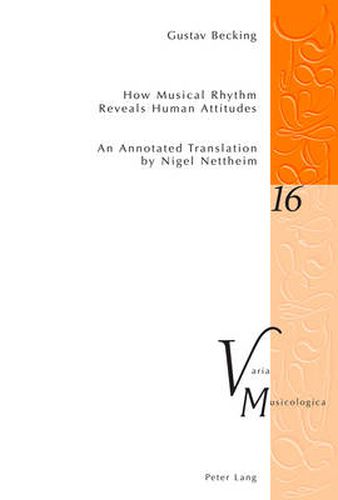Readings Newsletter
Become a Readings Member to make your shopping experience even easier.
Sign in or sign up for free!
You’re not far away from qualifying for FREE standard shipping within Australia
You’ve qualified for FREE standard shipping within Australia
The cart is loading…






What is the broadest significance of musical rhythm? Human attitudes to the world are reflected in it, according to Gustav Becking. Writing in the 1920s, Becking proposed a novel method of finding systematic differences of attitude between individual composers, between nations, and between historical time periods. He dealt throughout with Western classical music, from the period approximately 1600-1900. His method was to observe in fine detail the pattern of motion and pressure traced out by a small baton allowed to move in sympathy with a given musical excerpt. The various patterns arising for individual composers were represented graphically, and in that form became known as Becking curves . Implications were touched upon in psychology, sociology and philosophy. His thesis is now published in English translation from the original German for the first time, with many annotations.
$9.00 standard shipping within Australia
FREE standard shipping within Australia for orders over $100.00
Express & International shipping calculated at checkout
What is the broadest significance of musical rhythm? Human attitudes to the world are reflected in it, according to Gustav Becking. Writing in the 1920s, Becking proposed a novel method of finding systematic differences of attitude between individual composers, between nations, and between historical time periods. He dealt throughout with Western classical music, from the period approximately 1600-1900. His method was to observe in fine detail the pattern of motion and pressure traced out by a small baton allowed to move in sympathy with a given musical excerpt. The various patterns arising for individual composers were represented graphically, and in that form became known as Becking curves . Implications were touched upon in psychology, sociology and philosophy. His thesis is now published in English translation from the original German for the first time, with many annotations.